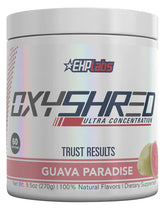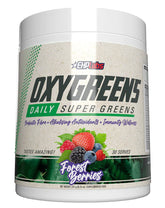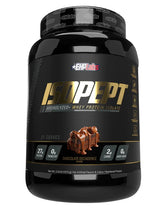DOMS Explained: Why You Get Sore After Workouts
Few things feel more satisfying than finishing a tough workout - until the next morning hits and every step reminds you of it. That deep, aching stiffness setting in a day or two after training isn’t a sign you’ve done something wrong. It’s called DOMS, or Delayed Onset Muscle Soreness, and it’s a natural part of the body’s process of adapting and getting stronger.
Let’s break down what’s really happening, why it occurs, how long it lasts, and the best ways to ease the pain and recover faster.
What Is DOMS?
DOMS stands for Delayed Onset Muscle Soreness, which typically develops 12-48 hours after intense or unfamiliar exercise. It’s that dull, aching, stiff feeling in your muscles - especially when you move or press on them.
This soreness happens when your muscles experience microscopic damage from resistance or eccentric (lengthening) movements. Think: lowering a dumbbell during a bicep curl, running downhill, or doing walking lunges. The muscle fibres tear slightly under tension, and your body responds by repairing and reinforcing them - making you stronger for next time.
So, while DOMS can be uncomfortable, it’s also a sign of your body adapting to new challenges.
How Long Does DOMS Last?
For most people, DOMS peaks around 24-72 hours post-workout and fades within a few days. The severity depends on your fitness level, workout intensity, and how well you recover.
If you’re new to training or trying a new exercise, DOMS can hit harder. As your body becomes more conditioned, soreness usually becomes milder and shorter-lived - even after hard sessions.
The Science Behind the Soreness
DOMS isn’t caused by lactic acid build-up, as many believe. In fact, lactic acid clears from your muscles within an hour after exercise.
The real cause is inflammation and cellular repair. When muscle fibres sustain microtears, your body increases blood flow and immune activity in those areas. This process triggers swelling, stiffness, and sensitivity.
Essentially, DOMS is your body’s repair crew clocking in for duty.
How to Reduce DOMS and Speed Up Recovery
You can’t completely avoid DOMS - especially after challenging or new workouts - but you can reduce its intensity and recover faster with a few proven strategies:
1. Stay Active - Even When You’re Sore
Gentle movement like walking, cycling, or mobility work helps increase circulation and flush nutrients into sore muscles. Total rest can make stiffness worse, so think active recovery, not inactivity.
2. Get Enough Protein
Protein provides the amino acids your muscles need to rebuild and repair. Aim to include high-quality protein sources after every workout - like chicken, eggs, or a clean protein supplement.
A good post-workout protein shake can jumpstart recovery by delivering fast-digesting protein to muscles when they need it most.
3. Replenish Magnesium
Magnesium plays a key role in muscle relaxation, energy production, and nerve function. Low magnesium levels can make cramps and soreness feel worse.
You can get it from foods like leafy greens, nuts, and whole grains - or use a magnesium supplement to support recovery and reduce muscle tightness.
4. Prioritise Sleep
Growth hormone and muscle repair activity peak during deep sleep. Aim for 7-9 hours per night to give your body the downtime it needs to rebuild effectively.
5. Hydrate and Refuel
Muscles need water and electrolytes to recover properly. Even mild dehydration can worsen soreness and prolong recovery. Combine plenty of water with nutrient-dense foods or electrolyte support, especially after sweaty sessions.
6. Warm Up and Cool Down Properly
A dynamic warm-up increases blood flow and prepares muscles for the stress ahead.
Cooling down with light stretching or slow movement helps reduce post-exercise tightness and improves circulation.
7. Try Massage, Foam Rolling, or Cold Therapy
Massage and foam rolling can temporarily reduce stiffness by improving blood flow and relaxing muscle fascia.
Cold plunges or contrast showers can also reduce inflammation, though their benefits vary from person to person.
Common Myths About DOMS
“If I’m not sore, I didn’t train hard enough.”
Not true. DOMS isn’t a direct measure of workout quality - it just means you did something new or intense. Progress comes from consistency and recovery, not pain.
“Stretching prevents soreness.”
Stretching is great for flexibility and mobility, but studies show it doesn’t prevent DOMS. It can, however, make you feel better temporarily.
“Pain means damage.”
DOMS is normal muscle adaptation, not injury. Sharp or joint pain, however, could signal something more serious - listen to your body.
Final Thoughts
DOMS is a reminder that you’re challenging your muscles in new ways. While the soreness can be uncomfortable, it’s also part of what drives progress.
Focus on proper nutrition, hydration, rest, and active recovery - and use protein and magnesium to give your muscles the building blocks they need to bounce back faster.
The next time you’re struggling to walk downstairs after leg day, just remember: you’re not broken - you’re rebuilding.
Editor’s Picks
OxyWhey by EHP Labs
- $68.90
$89.90- $68.90
- Unit price
- / per
Gold Standard 100% Whey by Optimum Nutrition
- From $71.90
$85.90- From $71.90
- Unit price
- / per
OxyShred by EHP Labs
- $61.90
$79.90- $61.90
- Unit price
- / per
OxyGreens by EHP Labs
- $46.90
$57.90- $46.90
- Unit price
- / per
IsoPept by EHP Labs
- $74.90
$99.90- $74.90
- Unit price
- / per















